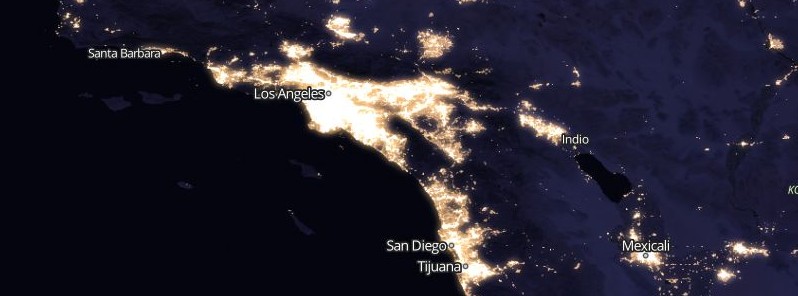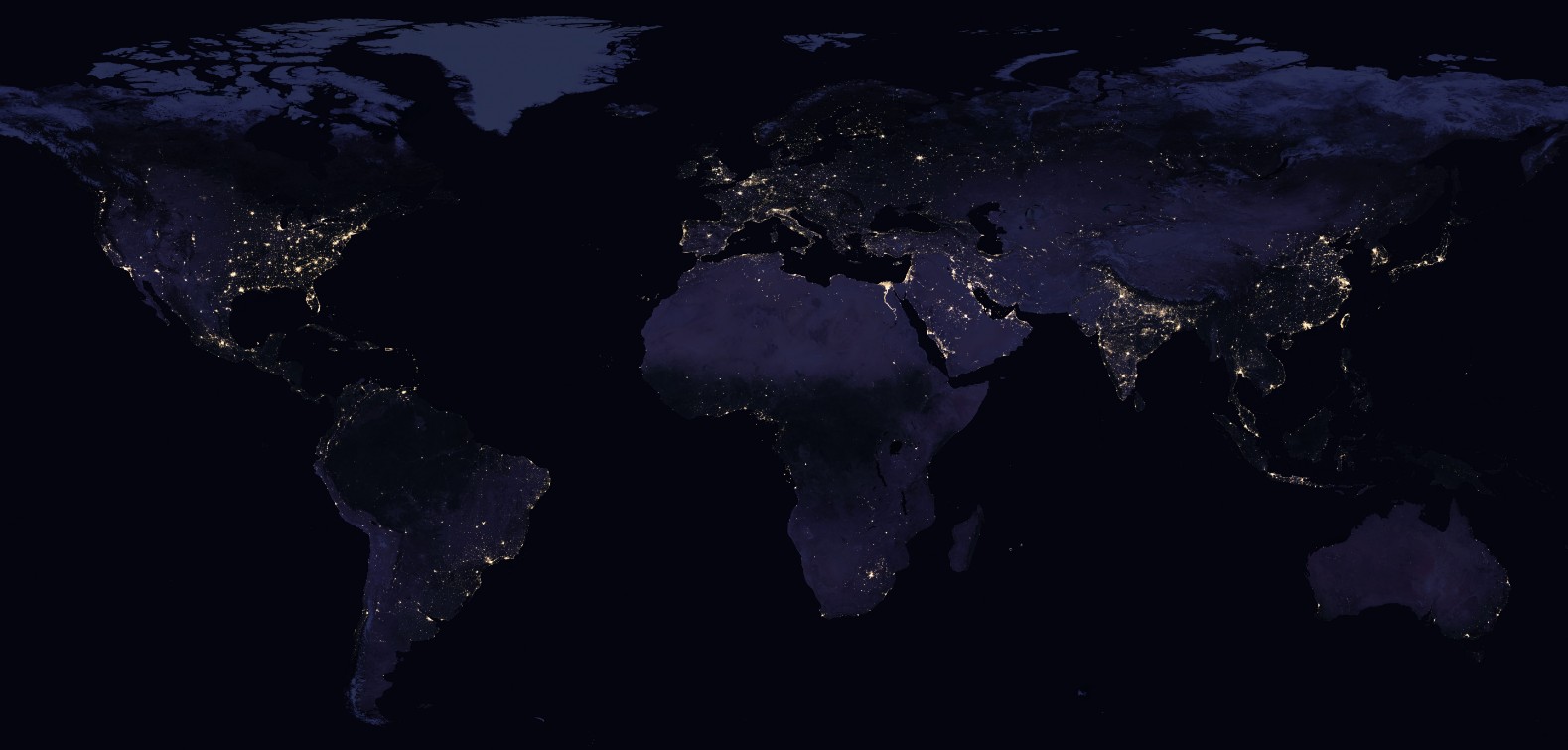Coming soon: daily, high-definition views of Earth at night

Scientists are on the verge of providing daily, high-definition views of Earth at night. The announcement was made today during official release of the new, global composite map of night lights as observed in 2016, the clearest yet composite view of the patterns of human settlement across our planet. The release of daily data is expected later this year.
Today, NASA scientists have released astonishing new global maps of Earth at night, but perhaps even more astonishing is their announcement that daily night imagery will become available later this year, allowing scientists to better aid disaster response, short-term weather forecasting, study energy use and much much more.
Since the launch of Suomi National Polar-orbiting Partnership (NPP) satellite in 2011, a research team at NASA's Earth Observing Satellite Data and Information System (EOSDIS) led by Earth scientist Miguel Román of GSFC has been analyzing night lights data and developing new software and algorithms to make night lights imagery clearer, more accurate and readily available. They are now on the verge of providing daily, high-definition views of Earth at night, and are targeting the release of such data to the science community later this year.

The team has been working to integrate nighttime data into NASA's Global Imagery Browse Services (GIBS) and Worldview mapping tools. Freely available to the science community and the public via the Web, GIBS and Worldview allow users to see natural- and false-color images of Earth within hours of satellite acquisition.
The principal challenge in nighttime satellite imaging is accounting for the phases of the moon, which constantly varies the amount of light shining on Earth, though in predictable ways. Likewise, seasonal vegetation, clouds, aerosols, snow and ice cover, and even faint atmospheric emissions (such as airglow and auroras) change the way light is observed in different parts of the world. The new maps were produced with data from all months of each year. The team wrote code that picked the clearest night views each month, ultimately combining moonlight-free and moonlight-corrected data.
Román and colleagues have been building remote sensing techniques to filter out these sources of extraneous light, gathering a better and more consistent signal of how human-driven patterns and processes are changing. The improved processing moves Suomi NPP closer to its full potential of observing dim light down to the scale of an isolated highway lamp or a fishing boat. The satellite's workhorse instrument is the Visible Infrared Imaging Radiometer Suite (VIIRS), which detects photons of light reflected from Earth's surface and atmosphere in 22 different wavelengths. VIIRS is the first satellite instrument to make quantitative measurements of light emissions and reflections, which allows researchers to distinguish the intensity, types and the sources of night lights over several years.
Suomi NPP observes nearly every location on Earth at roughly 13:30 and 01:30 (local time) each day, observing the planet in vertical 3 000-km (1 864 miles) strips from pole to pole. VIIRS includes a special "day-night band," a low-light sensor that can distinguish night lights with six times better spatial resolution and 250 times better resolution of lighting levels (dynamic range) than previous night-observing satellites. And because Suomi NPP is a civilian science satellite, the data are freely available to scientists within minutes to hours of acquisition.
Armed with more accurate nighttime environmental products, the NASA team is now automating the processing so that users will be able to view nighttime imagery within hours of acquisition.


Earth at night 2016 – Download large image (8 MB, JPEG, 13500×6750). Credit: NASA/NOAA Suomi NPP, EOSDIS, GSFC. Explore the image at EOSDIS Worldview
"Thanks to VIIRS, we can now monitor short-term changes caused by disturbances in power delivery, such as conflict, storms, earthquakes and brownouts," said Román. "We can monitor cyclical changes driven by reoccurring human activities such as holiday lighting and seasonal migrations. We can also monitor gradual changes driven by urbanization, out-migration, economic changes, and electrification. The fact that we can track all these different aspects at the heart of what defines a city is simply mind-boggling."
For instance, VIIRS detected power outages in the wake of Hurricane "Matthew," a major storm that struck the northeastern Caribbean and the southeastern United States in late September 2016. NASA's Disasters Response team provided the data to colleagues at the Federal Emergency Management Agency; in the future, NASA, FEMA and the Department of Energy hope to develop power outage maps and integrate the information into recovery efforts by first responders.
The NASA team envisions many other potential uses by research, meteorological and civic groups. For instance, daily nighttime imagery could be used to help monitor unregulated or unreported fishing. It could also contribute to efforts to track sea ice movements and concentrations. Researchers in Puerto Rico intend to use the dataset to reduce light pollution and help protect tropical forests and coastal areas that support fragile ecosystems. And a team at the United Nations has already used night lights data to monitor the effects of war on electric power and the movement of displaced populations in war-torn Syria.
In a separate, long-term project, Román is working with colleagues from around the world to improve global and regional estimates of carbon dioxide emissions. The team at NASA's Global Modeling and Assimilation Office (GMAO) is combining night lights, urban land use data, and statistical and model projections of anthropogenic emissions in ways that should make estimates of sources much more precise.
Featured image: NASA/NOAA Suomi NPP, EOSDIS, GSFC

Commenting rules and guidelines
We value the thoughts and opinions of our readers and welcome healthy discussions on our website. In order to maintain a respectful and positive community, we ask that all commenters follow these rules.